Historical Overview of Cairo
Cairo, the capital city of Egypt, boasts a rich and diverse history that dates back over a thousand years. As a hub of culture, trade, and political power, Cairo has played a central role in shaping the region’s history. From its origins as a Fatimid city to its development during the Islamic Golden Age, Cairo has continually evolved, reflecting the numerous civilizations that have influenced it. Today, it stands as a vibrant metropolis where ancient traditions and modern innovation coexist seamlessly.
Ancient Foundations and Early History
Cairo, Egypt’s bustling capital, has a rich historical background rooted in ancient civilizations. The area originally served as a small settlement during the Pharaonic period, with archaeological evidence dating back to the Old Kingdom. Over centuries, it evolved from a strategic military post into a prominent center of culture and commerce.
During the time of the Roman and Byzantine empires, Cairo’s region experienced significant development, contributing to its early significance in the broader Egyptian history. The city remained relatively modest until the Islamic conquest in the 7th century, which introduced new architectural styles and cultural influences that laid the foundation for Cairo’s future grandeur.
In the 10th century, the city grew under the Fatimid Caliphate, establishing itself as a major political and religious hub with the founding of Al-Qahirah (The Victorious). This era marked the beginning of Cairo’s prominence as a center of Islamic learning, arts, and architecture, setting the stage for its development into one of the world’s largest and most influential cities.
Islamic Cairo and the Mamluk Era
Cairo, Egypt, has a rich and diverse history that dates back to ancient times, serving as a vital center of culture, trade, and political power throughout the ages. Its strategic location along the Nile River has made it a crucial hub for civilizations, from the Pharaonic period to the Islamic era.
The Islamic Cairo district, established in the 10th century, became the heart of Islamic culture and architecture in Egypt. It is renowned for its medieval mosques, markets, and fortifications, reflecting the grandeur of the Islamic civilization that flourished in the region. This area was intricately linked to Cairo’s status as a city of religious learning and political authority during the Islamic Golden Age.
The Mamluk Era, spanning from the 13th to the 16th centuries, was a significant period in Cairo’s history, characterized by a flourishing of arts, architecture, and economic prosperity. The Mamluks, a military class of slave origin, established a powerful sultanate that significantly shaped Cairo’s urban landscape. Iconic monuments such as the Mosque of Sultan Hassan and the Al-Rifa’i Mosque exemplify the Mamluk architectural style, showcasing intricate stone carvings, grand domes, and elaborate minarets. This period marked Cairo’s rise as a major cultural and trading nexus in the Islamic world, leaving a lasting legacy evident in the city’s historic sites today.
Ottoman Period and Modernization
Cairo, the capital of Egypt, has a rich historical legacy that spans thousands of years, making it one of the most significant cities in the Middle East and Africa. Originally founded around a fortress established by the Fatimid caliphate in the 10th century, Cairo grew into a vibrant center of culture, trade, and learning, especially during the Islamic Golden Age. Throughout its history, Cairo has been home to many rulers and civilizations, including the Mamluks and Ottomans, each leaving a distinct mark on the city’s architecture, culture, and urban development.
During the Ottoman period, beginning in the 16th century, Cairo became a key administrative and military hub within the empire. The Ottomans invested in the city’s infrastructure, commissioning impressive mosques, schools, and markets that reflected Ottoman architectural styles. The period also saw Cairo’s role as a center of Islamic scholarship, with numerous religious institutions flourishing. Despite some regional decline, Cairo remained a vital political and commercial city, retaining its cultural prominence in the region.
In the modern era, especially from the 19th century onward, Cairo experienced significant modernization efforts. Under Muhammad Ali Pasha and subsequent rulers, the city saw the construction of modern institutions, railways, and public works. The French and British influence introduced new urban planning concepts, developing neighborhoods with European-style architecture. Today, Cairo continues to evolve, blending its historic charm with modern development, serving as Egypt’s political, economic, and cultural heart.
20th Century Developments and Growth
Cairo, the capital of Egypt, experienced significant transformations throughout the 20th century, evolving from a historic city into a major metropolis. During the early part of the century, Cairo maintained its status as a center of political, cultural, and educational activity, reflecting its deep-rooted history dating back to ancient times. The city saw rapid population growth as rural residents migrated to urban areas in search of better opportunities, leading to the expansion of its urban boundaries.
In the mid-20th century, Cairo became a focal point of political change, especially after the 1952 revolution that led to the end of the monarchy and the establishment of the modern Republic of Egypt. This period brought about significant infrastructural developments, including the construction of new government buildings, residential neighborhoods, and transportation networks. The city’s architecture began to blend traditional Islamic styles with modern urban planning.
Post-independence, Cairo experienced extensive growth driven by industrialization and modernization efforts. The city expanded outward, with new districts and neighborhoods emerging to accommodate the increasing population. Educational institutions and cultural institutions, such as the Egyptian Museum and newly established universities, played a crucial role in shaping the city’s intellectual landscape.
Furthermore, the 20th century saw the development of major infrastructural projects, including roads, bridges, and public transportation systems, which facilitated mobility and economic growth. The urban landscape of Cairo grew vertically and horizontally, with high-rise buildings and sprawling suburbs becoming common features. This period laid the foundation for Cairo’s status as a vibrant, dynamic city that continues to develop into the 21st century while preserving its rich historical heritage.
Geography and Climate
Cairo, the bustling capital of Egypt, is shaped by its unique geography and climate. Situated along the banks of the Nile River, the city features a mix of fertile lands and desert landscapes. Its climate is characterized by hot, dry summers and mild winters, influenced by its location in the northeastern part of Africa. Understanding Cairo’s geography and climate provides insight into the region’s history, culture, and everyday life.
Location and Topography
Cairo, Egypt, is situated in the northeastern part of the country, along the banks of the Nile River. This strategic location has historically made it a vital hub for commerce, culture, and politics in the region. The city is surrounded by the vast Eastern Desert to the east and the fertile Nile Delta to the west, creating a unique landscape that blends urban development with natural features.
The topography of Cairo is characterized by a mix of flat plains, the Nile River’s lush delta, and some low-lying hills. The city’s elevation varies from approximately 20 to 40 meters above sea level. Its proximity to the Nile has influenced urban growth and agriculture, with the river providing essential water resources in an otherwise arid environment. The surrounding desert plains are generally dry and sparse, contrasting sharply with the bustling city center and historic sites.
Climatically, Cairo experiences a hot desert climate, with extremely hot summers where temperatures often exceed 35°C (95°F). Winters are mild and relatively comfortable, with daytime temperatures averaging around 18-20°C (64-68°F). Precipitation is scarce throughout the year, primarily occurring during the winter months, making water scarcity a persistent issue. The city’s climate and geographical features have shaped its development, culture, and daily life for centuries.
Climate Characteristics and Seasons
Cairo, Egypt, is situated in the northeastern part of the country along the Nile River, serving as a major cultural and political center. Its geographical position gives it a relatively flat terrain with some surrounding hills, and its proximity to the desert influences the local climate. The city’s location within the Sahara Desert impacts its climate characteristics, leading to hot, dry conditions prevalent throughout most of the year.
The climate of Cairo is classified as a hot desert climate, characterized by extremely high temperatures during summer and mild winters. Summers, from June to September, can see temperatures soaring above 35°C (95°F), often reaching up to 40°C (104°F) or higher. Winters, from December to February, are milder with daytime temperatures averaging around 11-19°C (52-66°F), although nights can be cooler. Rainfall is scarce, mainly occurring during the winter months, contributing to the arid environment.
The seasons in Cairo can be summarized as hot summer, mild winter, and a brief transitional period in spring and autumn. Summer months are marked by intense heat and very little rainfall, while winter brings cooler temperatures and occasional light rain. Spring and autumn are relatively short and serve as transitional periods where temperatures gradually rise or fall, respectively. Overall, Cairo’s climate is dominated by its desert influence, making it a city of hot, dry conditions most of the year.
Urban Expansion and Land Use
Cairo, Egypt, is a city characterized by its diverse geography and climate. Situated along the Nile River in northeastern Egypt, Cairo features a combination of fertile river plains and surrounding desert landscapes. The city experiences a hot desert climate, with high temperatures during summer months, mild winters, and low annual rainfall. This arid climate influences the urban landscape and the daily lives of its residents.
Urban expansion in Cairo has been rapid over the past century due to population growth and economic development. The city has seen significant new constructions and expansion beyond its historic core, leading to the development of new suburbs and districts. This expansion often results in the encroachment on agricultural land and desert, altering traditional land use patterns. The increasing demand for housing and infrastructure has also intensified urban sprawl, which poses challenges related to transportation, traffic congestion, and strain on resources.
Land use in Cairo reflects a mix of historic sites, residential areas, commercial zones, and industrial districts. The core of the city is densely populated, with narrow streets and high-rise buildings, especially in central districts. Peripheral areas tend to have more open land, with ongoing development projects. Managing the city’s land use effectively remains crucial to balancing growth, preserving cultural heritage, and ensuring sustainable urban development amid the pressures of climate and population increases.
Cultural and Artistic Heritage
Cairo, Egypt, is a city rich in cultural and artistic heritage that reflects a tapestry of ancient traditions and vibrant contemporary expressions. As a crossroads of civilizations, Cairo offers a unique blend of historical monuments, classical art, and lively cultural scenes that showcase the nation’s diverse legacy. This dynamic metropolis embodies the enduring spirit of Egyptian culture through its museums, galleries, music, and traditional crafts, making it a fascinating destination for those interested in exploring the depth of human creativity and history.
Islamic Architecture and Landmarks
Cairo, Egypt, is a city rich in cultural and artistic heritage, renowned for its stunning Islamic architecture and historic landmarks. The city has been a center of Islamic civilization for centuries, reflecting a diverse blend of artistic styles and religious influences that have shaped its unique identity.
- The Mosque of Muhammad Ali, also known as the Alabaster Mosque, is a prominent symbol of Cairo’s Islamic architecture. Located within the Citadel of Cairo, it was built in the 19th century and features grand domes and towering minarets.
- The Mosque of Sultan Hassan stands as one of the greatest examples of medieval Islamic architecture in Egypt. Constructed in the 14th century, it combines geometric patterns, intricate tile work, and massive structures to create a majestic appearance.
- Al-Azhar Mosque, founded in 970 AD, is not only a place of worship but also a renowned center of learning. Its beautiful courtyards, prayer halls, and minarets exemplify classic Islamic design and scholarly tradition.
- The Islamic Cairo district itself is a UNESCO World Heritage Site, housing numerous mosques, madrasas, and traditional markets that showcase the city’s rich architectural and artistic heritage.
- Cairo’s museums, such as the Museum of Islamic Art, house an impressive collection of artifacts, textiles, calligraphy, and decorative arts that highlight the city’s long-standing artistic achievements.
Museums and Cultural Institutions
Cairo, Egypt, is a vibrant city rich in cultural and artistic heritage that reflects its long and diverse history. The city boasts numerous museums and cultural institutions that preserve and showcase its ancient and modern arts, history, and traditions. The Egyptian Museum in Tahrir Square is a world-renowned institution housing an extensive collection of artifacts from Egypt’s Pharaonic era, including the treasure of Tutankhamun. In addition to the Egyptian Museum, the Museum of Islamic Art displays an impressive collection of artifacts that highlight Cairo’s significance as a center of Islamic culture and history. The Coptic Museum provides insights into Egypt’s Christian heritage, featuring religious icons, manuscripts, and artifacts from the Coptic community. Cairo also boasts vibrant art galleries, theaters, and cultural festivals that celebrate both traditional and contemporary artistic expressions. These institutions play a vital role in fostering a deeper understanding of Cairo’s cultural identity, ensuring that its rich artistic legacy endures for future generations.
Traditional Crafts and Performing Arts
Cairo, Egypt, is a vibrant hub of cultural and artistic heritage that reflects its rich history spanning thousands of years. The city is renowned for its traditional crafts, such as intricate textile weaving, elaborate jewelry making, and vibrant pottery that showcase the skilled craftsmanship passed down through generations. Performing arts also thrive in Cairo, with classical music, traditional dance, and theatrical performances preserving the city’s cultural identity. Museums and historical sites, including the Egyptian Museum and Islamic Cairo, display invaluable artifacts and architectural masterpieces that highlight Cairo’s contribution to global cultural heritage. These elements collectively contribute to the city’s status as a center of artistic expression and cultural preservation in the Arab world.
Economy and Industry
Cairo, Egypt, is a vibrant metropolis with a dynamic economy and diverse industrial sector. As the capital city, it serves as the economic hub of the country, hosting major industries such as manufacturing, textiles, and information technology. The city’s strategic location and burgeoning infrastructure have contributed to its growth, making it a vital center for trade and commerce in the region. Cairo’s economy continues to evolve, reflecting both traditional industries and emerging sectors that drive Egypt’s overall development.
Commercial Sector and Markets
The economy and industry in Cairo, Egypt, form the backbone of the nation’s commercial sector, contributing significantly to the country’s GDP. As a major urban center, Cairo hosts a diverse range of industries including textiles, pharmaceuticals, construction, and technology, fostering economic growth and employment opportunities. The city’s strategic location along the Nile River enhances its role as a regional trade hub, facilitating the flow of goods and services across Africa and beyond.
The commercial sector in Cairo is vibrant, with bustling markets, modern shopping malls, and wholesale markets that serve both local residents and international visitors. Key markets such as Khan El Khalili have historical significance and attract tourists seeking traditional Egyptian crafts and goods. The financial sector, anchored by the Central Bank of Egypt and numerous banks, supports business development, investment, and trade activities in the city.
Markets in Cairo are characterized by a dynamic mix of traditional bazaars and contemporary commercial complexes, reflecting the city’s economic diversity. The ease of access to regional and international markets has encouraged entrepreneurship and the growth of a competitive marketplace. Overall, Cairo continues to be an economic powerhouse in Egypt, driving industrial innovation, boosting trade, and expanding its influence in regional markets.
Industrial Zones and Manufacturing
Cairo, Egypt’s bustling capital, plays a vital role in the country’s economy and industrial development. The city is a major hub for various industries, including textiles, food processing, and chemicals, contributing significantly to national GDP. Industrial zones in Cairo are strategically established to promote manufacturing, attract investment, and create employment opportunities. These zones provide infrastructure and incentives to support businesses ranging from small enterprises to large factories. The manufacturing sector in Cairo benefits from access to a large labor force and proximity to key markets domestically and internationally. Overall, the integration of industrial zones and manufacturing activities fuels economic growth and modernization efforts in the city, positioning Cairo as a central player in Egypt’s industrial landscape.
Tourism Industry and Key Attractions
Cairo, Egypt, is a bustling metropolis that serves as a vital hub for the country’s economy and industry. The city boasts a diverse economic landscape, including sectors such as manufacturing, textiles, information technology, and services. It also benefits from a strategic location that facilitates trade and commerce within the Middle East and North Africa region. The tourism industry is a cornerstone of Cairo’s economy, drawing millions of visitors annually eager to explore its rich history and vibrant culture.
The city is renowned for its key attractions, including the iconic Giza Pyramids and the Sphinx, which are UNESCO World Heritage Sites and symbols of ancient Egypt. The Egyptian Museum houses an extensive collection of ancient artifacts, including the treasures of Tutankhamun. Other notable sites include the Islamic Cairo district with its historic mosques and bazaars like Khan El Khalili. Modern attractions such as the Cairo Tower and vibrant neighborhoods offer a blend of tradition and contemporary life, making Cairo a captivating destination for travelers and a dynamic center for industry and commerce.
Educational and Scientific Institutions
Educational and scientific institutions in Cairo, Egypt, play a vital role in fostering knowledge, innovation, and cultural development within the city and the broader region. As a historic center of learning, Cairo hosts a diverse array of universities, research centers, and cultural institutions that contribute to academic excellence and scientific progress. These institutions not only serve as hubs for education but also promote research, cultural preservation, and international collaborations, making Cairo a leading center for education and scientific advancement in the Middle East.
Major Universities and Colleges
Cairo, Egypt, is home to some of the most prominent educational and scientific institutions in the region. It serves as a hub for higher education and research, attracting students and scholars from around the world. The city boasts a rich history of academic excellence that dates back centuries, blending ancient knowledge with modern innovation.
Major universities in Cairo include Cairo University, established in 1908, which is one of the oldest and most prestigious institutions in Egypt. It offers a wide range of undergraduate and postgraduate programs in fields such as medicine, engineering, humanities, and social sciences. Al-Azhar University, founded in 970 AD, is renowned for its Islamic studies and theological research, attracting students from diverse backgrounds.
The American University in Cairo (AUC) is a leading private institution known for its liberal arts education and emphasis on research. It provides undergraduate, graduate, and doctorate programs and has a strong international reputation. Other notable institutions include The German University in Cairo and Cairo Polytechnic University, both contributing significantly to scientific research and technological development.
These institutions play a vital role in advancing scientific knowledge, fostering innovation, and providing high-quality education. They not only serve the local community but also contribute to Egypt’s position as a center for academic and scientific excellence in the Middle East and Africa.
Research Centers and Innovation Hubs
Cairo, Egypt, is a prominent center for educational and scientific advancement, hosting numerous institutions dedicated to research, development, and innovation. These institutions play a vital role in fostering academic excellence, technological progress, and scientific discoveries, contributing significantly to both national and regional development.
- The American University in Cairo (AUC): An esteemed private university that promotes research and innovation across various disciplines, including sciences, engineering, and humanities.
- Cairo University: One of the oldest and most prestigious universities in Egypt, offering extensive research opportunities in medicine, engineering, sciences, and social sciences.
- National Research Centre (NRC): Focuses on applied research in areas such as agriculture, industry, health, and energy, supporting sustainable development in Egypt.
- Egyptian Knowledge Bank: An extensive digital platform providing access to countless academic resources, fostering research and learning across educational levels.
- The Smart Village: A major technology park and innovation hub that hosts start-ups, IT companies, and research centers committed to technological development and entrepreneurship.
- Egyptian Space Agency: A pioneering organization in space research and satellite technology, supporting scientific exploration and innovation in aerospace sciences.
- Cairo Science City (Innovation Center): A hub designed to promote collaboration among researchers, universities, and industry partners to enhance scientific and technological innovation.
Transportation and Infrastructure
Cairo, Egypt’s bustling capital, relies heavily on a well-developed transportation and infrastructure network to support its growing population and vibrant commerce. The city’s transportation system includes a mix of roadways, railways, and public transit options that facilitate daily movement for millions of residents and visitors. Continual improvements and expansions are vital to address congestion, enhance connectivity, and promote sustainable urban development in this historic metropolis.
Public Transit Systems
Public transit systems in Cairo, Egypt, are essential for the daily commute of millions of residents and visitors. The city relies heavily on a combination of metro lines, buses, and microbuses to facilitate transportation across its sprawling urban area. Cairo’s metro system, established in 1969, is one of the oldest in Africa and continues to expand, providing a fast and affordable means of travel amid the city’s congested streets.
Besides the metro, the Cairo Transport Authority operates an extensive bus network that covers both central and suburban areas. Microbuses and shared taxis are also popular, offering flexible routes and quick access to various neighborhoods, especially where official transit options are limited. Despite these systems, Cairo faces challenges such as traffic congestion, congestion, and pollution, highlighting the need for continued infrastructure development and modernization.
Efforts to improve Cairo’s transportation infrastructure include the ongoing expansion of the metro, the introduction of new bus rapid transit (BRT) corridors, and plans to introduce more environmentally friendly transport modes. These initiatives aim to reduce travel times, alleviate traffic congestion, and enhance overall mobility within the city, supporting economic growth and improving the quality of life for Cairo’s residents.
Major Roads and Traffic Management
Cairo, Egypt, is a bustling metropolis where transportation and infrastructure play crucial roles in daily life. The city is served by an extensive network of major roads and highways that facilitate the movement of millions of residents and visitors. Key avenues such as the Ring Road, Salah Salem Street, and Mohamed Naguib Axis connect various districts of Cairo and help alleviate congestion in the city center.
To manage traffic and improve transit efficiency, Cairo has implemented several traffic management strategies, including the use of traffic signals, surveillance cameras, and smart traffic systems. These measures aim to reduce congestion, enhance safety, and ensure smooth flow during peak hours. Additionally, ongoing projects like expanding road capacity and developing new transportation corridors are vital to supporting Cairo’s growing urban population.
Airports and Connectivity
Cairo, Egypt, boasts a well-developed transportation and infrastructure network that plays a vital role in connecting the city internally and with the rest of the world. The city’s infrastructure includes numerous highways, roads, and bridges facilitating the movement of millions of residents and visitors daily. Cairo International Airport serves as the primary hub for international travel, offering extensive flight connections to destinations across Africa, the Middle East, Europe, and beyond. The airport is equipped with modern facilities and continuously upgrades its services to accommodate increasing passenger numbers. Additionally, Cairo benefits from an expanding network of public transportation options, including metro lines, buses, and taxis, which help ease urban mobility challenges. Overall, Egypt’s capital maintains a strategic focus on enhancing airport capacity and transportation connectivity to support economic growth and tourism development.
Society and Demographics
Cairo, the bustling capital of Egypt, is a vibrant city characterized by diverse societies and dynamic demographics. Its population reflects a rich tapestry of cultural, historical, and social influences, making it one of the most densely populated cities in the Arab world. Understanding the society and demographics of Cairo provides insight into its urban growth, social structures, and the everyday lives of millions of residents.
Population Overview
Cairo, the capital city of Egypt, is one of the most populous urban centers in Africa and the Middle East. It serves as a vital cultural, political, and economic hub, with a diverse and rapidly growing population. The city’s demographics reflect a mix of ethnicities, religions, and social backgrounds, contributing to its vibrant cultural landscape.
As of recent estimates, Cairo’s population exceeds 9 million residents within the administrative boundaries, but the metropolitan area hosts over 20 million inhabitants, making it one of the largest urban agglomerations in the region. The population has experienced steady growth due to rural-to-urban migration, motivated by opportunities for employment, education, and better living standards.
The demographic profile of Cairo is characterized by a young population, with a significant proportion under the age of 30. This youthful demographic presents both opportunities and challenges for the city, including the need for expanded infrastructure, education, and employment opportunities. The city also exhibits a high population density, especially in historic districts and informal settlements, which affects urban planning and resource management.
Egyptian society in Cairo is predominantly Muslim, with a significant Christian minority, primarily Coptic Christians. The city’s social fabric is influenced by traditional values alongside modern influences, shaping the daily lives and interactions of its residents. Overall, Cairo’s demographic and societal makeup continues to evolve, reflecting ongoing demographic shifts and societal changes within Egypt.
Ethnic and Religious Composition
Cairo, the capital city of Egypt, is a vibrant and diverse metropolis with a rich tapestry of society and demographics. It is home to a mix of ethnicities and religious groups that reflect Egypt’s historical and cultural heritage. The majority of the population are ethnic Egyptians who speak Arabic and practice Islam, which is the dominant religion.
There is also a significant Coptic Christian minority in Cairo, representing one of the oldest Christian communities in the world. These communities coexist within the urban landscape, contributing to the city’s cultural diversity and social fabric. Over the years, Cairo has become increasingly cosmopolitan, welcoming expatriates and migrants from various parts of Africa, the Middle East, and beyond.
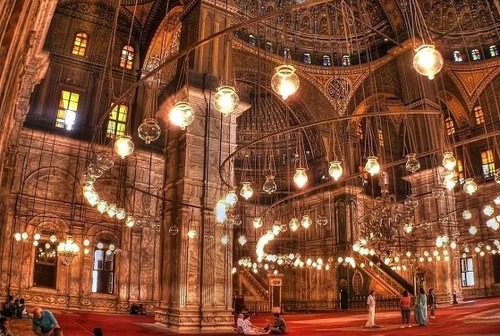
The demographic makeup of Cairo is characterized by a youthful population, with a large proportion under the age of 30. This demographic trend influences the city’s dynamics, from its labor market to its cultural scene. The city’s society is marked by a blend of traditional customs and modern influences, creating a unique social environment in the heart of Egypt.
Urban Lifestyle and Social Trends
Cairo, Egypt, exemplifies a dynamic blend of society and demographics that shape its vibrant urban landscape. As the largest city in Egypt and one of the most populous in Africa, Cairo’s population growth is driven by rural-to-urban migration, leading to a diverse demographic profile encompassing various age groups, ethnicities, and social backgrounds. The city boasts a youthful population, with a significant percentage under 30, influencing social interactions and cultural expressions.
The urban lifestyle in Cairo is characterized by a rapid pace of life, bustling markets, and a rich tapestry of traditions and modernity coexisting side by side. The city’s streets are filled with historic bazaars, modern malls, and a vibrant street food culture that reflects its diverse social fabric. Residents often navigate daily life through a mix of traditional practices and contemporary trends, highlighting the city’s unique cultural identity.
Social trends in Cairo are shaped by factors such as technological advancement, education, and global influences. The rise of social media and mobile technology has transformed communication, activism, and entertainment, particularly among the youth. There is also a growing emphasis on fashion, music, and arts that blend Egyptian heritage with modern global trends. Additionally, issues like gender roles, urban development, and economic disparities continue to influence societal shifts, making Cairo a fascinating case of ongoing social evolution.
Challenges and Future Development
Cairo, Egypt, a city rich in history and culture, faces numerous challenges as it endeavors to balance rapid urban growth with preservation and sustainable development. As one of the largest cities in Africa and the Middle East, Cairo struggles with issues such as traffic congestion, pollution, and infrastructure needs. However, innovative projects and modernization efforts hold the promise of shaping a brighter future for the city, addressing these obstacles while embracing new technologies and sustainable practices to ensure its continued growth and cultural vitality.
Environmental and Pollution Concerns
Environmental and pollution concerns in Cairo, Egypt pose significant challenges to the city’s sustainable development and the health of its residents. Rapid urbanization, population growth, and industrialization have strained the city’s natural resources, leading to deteriorating air and water quality. Addressing these issues requires comprehensive strategies and innovative solutions to ensure a healthier environment for future generations.
- Increasing air pollution from vehicular emissions, industrial activities, and reliance on fossil fuels contributes to smog and respiratory problems among Cairo’s population.
- Water pollution from wastewater discharge, inadequate sewage treatment, and contamination of the Nile River threaten public health and water availability.
- Waste management remains a major challenge, with inadequate disposal facilities leading to illegal dumping and accumulation of solid waste in urban areas.
- The rise of depleting green spaces and urban heat islands exacerbates environmental degradation and impacts residents’ quality of life.
Future development in Cairo must focus on sustainable urban planning, promoting renewable energy, and investing in environmental infrastructure. Implementing stricter pollution control regulations, expanding green areas, and encouraging community awareness are vital steps. Embracing newer technologies such as solar energy, waste recycling, and advanced wastewater treatment can help mitigate existing problems and foster a cleaner, healthier Cairo in the years ahead.
Urban Planning and Housing
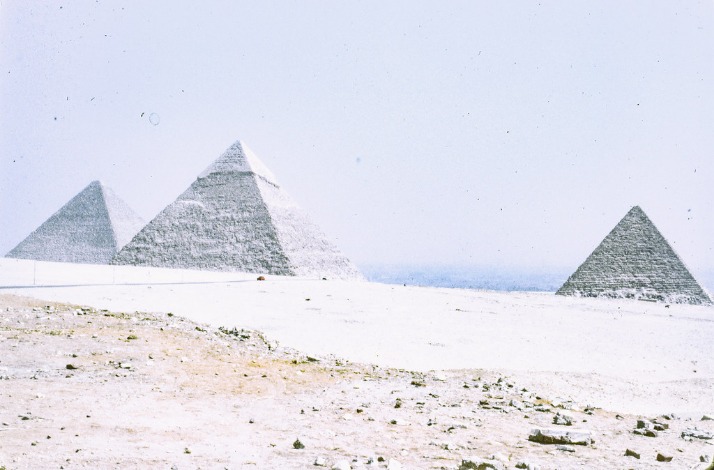
Urban planning and housing in Cairo, Egypt face numerous challenges that stem from rapid population growth, urban sprawl, and infrastructure limitations. As one of the most densely populated cities in Africa, Cairo struggles to provide adequate housing, transportation, and public services for its residents. The ongoing expansion has often led to unplanned settlements and informal housing, which lack access to basic amenities and pose health and safety risks.
Future development in Cairo requires innovative strategies to address these issues and foster sustainable growth. Efforts should focus on upgrading existing neighborhoods, promoting high-density and mixed-use developments, and improving transportation networks to reduce congestion. Additionally, integrating modern infrastructure with cultural and historical preservation is essential to maintaining Cairo’s unique identity while modernizing its urban landscape.
- Implementation of comprehensive urban master plans that consider population projections and environmental impacts.
- Expanding affordable housing projects to accommodate rising demand without overburdening land resources.
- Investing in public transportation systems such as metro lines and bus networks to enhance mobility.
- Encouraging sustainable building practices and green spaces to improve air quality and residents’ quality of life.
- Promoting community participation in planning processes to ensure developments meet local needs.
By addressing these challenges through coordinated policy-making and innovative urban development strategies, Cairo can transform into a more livable, sustainable, and resilient city for future generations.
Smart City Initiatives and Sustainability
Cairo, Egypt, faces numerous challenges and opportunities as it advances its Smart City initiatives and sustainability efforts. Rapid urbanization has resulted in infrastructure strain, traffic congestion, pollution, and resource management issues. Implementing smart city technologies aims to enhance urban living by integrating IoT, data analytics, and digital services to optimize energy use, transportation, and public services. However, ensuring equitable access and data privacy remains a challenge. Looking ahead, Cairo’s focus on sustainability involves developing renewable energy projects, promoting green building practices, and improving waste management. These efforts are essential for creating a resilient and environmentally friendly urban environment, balancing modernization with the preservation of Cairo’s cultural heritage and improving the quality of life for its residents.

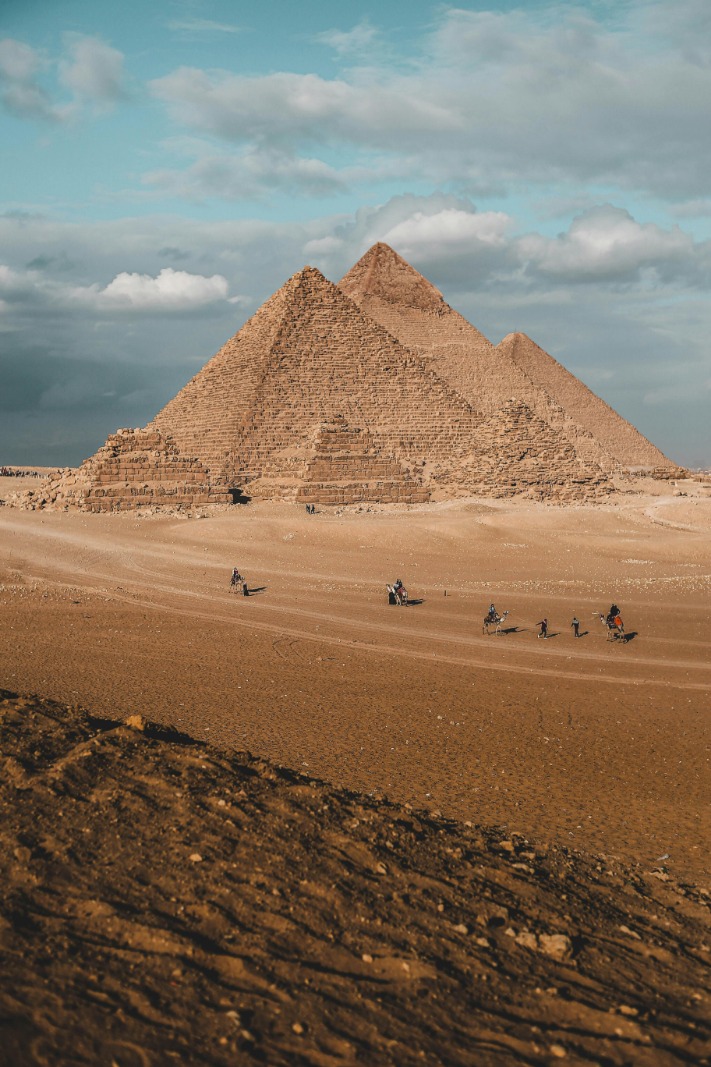

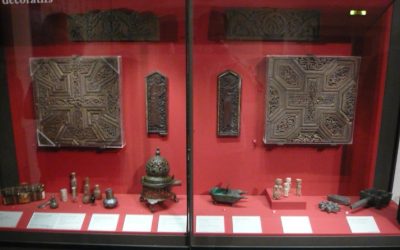
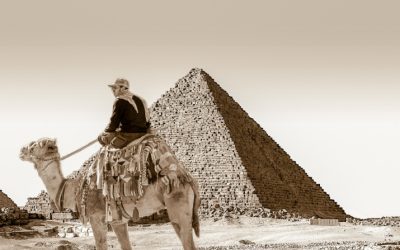
0 Comments